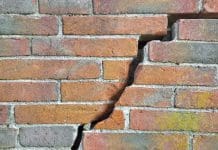When you think of an industry historically dominated by men, the built environment sector may be one of the first that comes to mind. Sarah Towers, operations manager at SPIE UK, explores how the sector can champion the next generation of women in the built environment
According to a 2020 report by EngineeringUK, women in the built environment sector remain severely underrepresented, with just 14.5% of those working in engineering occupations being female, compared to 49% of the overall female UK working population. Many pathways and initiatives have been put in place to help redress this issue. However, we need to keep reflecting and improving upon them if we are to truly build an industry that can confidently say it acts in the advantage of everyone in the communities it serves.
There are several factors that explain the gender disparity. These include unconscious gender bias, students’ lack of knowledge about what a career in engineering entails and the variety of opportunities available. Many studies including McKinsey & Company’s Diversity Wins 2020 report demonstrate that diversity in the workplace can produce greater creativity and innovation and improved business performance. That is why it is essential that the sector and educational organisations, engage with young people, especially girls, to cultivate and sustain their interest in this sector and demonstrate that it is a profession for all.
Education has the potential to close the gender gap within the built environment sector
According to the same EngineeringUK report referenced above, a young person’s perception and knowledge of an occupation will be a factor in their decision to pursue a career in that profession. The 2017-2018 Universities and Colleges Admissions Service data provided by Higher Education Student Statistics show that female students are choosing to study STEM subjects with a 35% female population. However, these students are not then going into engineering, with only 10% female engineer professionals in the workforce.
The industry needs to ask itself why this is the case and should continue to work on dispelling the image of building sites and hard hats. Crucially, we need to demonstrate the built environment’s role in solving environmental and societal challenges. It is also vital that people have greater visibility of career paths, benefits, and development opportunities.
Many constructive initiatives are being done to remedy the gender disparity. These include increasing teachers’ understanding of non-traditional vocations to better advise students on future career alternatives or exposing women and girls to female role models. Because representation matters, it is important that women are able to speak at job fairs, recruitment fairs and any other opportunities to influence young girls as their ideas about a preferred future career take shape.
What can women do within the built environment sector?
As a start, women can take on any role in the industry. The idea that engineering is a male profession is changing. As women continue to recognise their place in the sector with 37 percent of new entrants coming from higher education and into the construction sector according to Go Construct’s 2019 industry survey – we can only view this as a step in the right direction.
We also recognise the multitude of efforts within the industry to overcome the underrepresentation of women in the built environment. Through mentorship in the workplace and allyship amongst our peers, we can continue to provide a safe space for women to openly discuss their ambitions and help the next generation thrive in their careers. The Moving Ahead and Deloitte research on turning the gender diversity dial found that mentors and mentees feel empowered by the relationship and reported greater confidence and career satisfaction. This also combats the issue of women hitting a ceiling in the industry or leaving and go elsewhere.
Another aspect to consider is the shift to working from home. According to the Resolution Foundation’s 2021 research around pandemic-driven shifts in the workforce, the number of women in the workplace has risen after more companies allowed employees to work from home. By continuing to allow working from home, women are able to sustain their careers in the built environment and continue to provide their perspectives. After all, diversity is a key ingredient for better decision-making among teams. This also opens the conversation to shaping the work to benefit the lifestyles of women the same way it does for men.
The fact that many women do not see jobs in the built environment as a career choice because they feel discouraged due to gender bias in the occupation is a failure at the expense of the industry. It is a missed opportunity for the sector to account for the varied perspectives and experiences for which it designs spaces in which to live, learn and work. More importantly, it is a challenge that the sector recognises and is starting to remedy.
Competition for people with STEM qualifications is incredibly high, and the built environment needs to think about its image and how it competes with other professions. Furthermore, if we are to address inequity in a period of high volume recruiting and talent shortages, it is important that the sector not only inspires young girls to become engineers, but also retains them by working to support the careers of women once in the industry.
Championing the next generation of women in the built environment
Through the combined efforts of key influencers such as parents and teachers, the participation and representation of female role models in STEM and the overall industry’s efforts to attract both sexes, we can reshape the industry and make sure that not only does it act always in the advantage of the general public, but it equally represents the world we live in too.
We have a long way to go in closing gender disparity but, there is evidence of change in respect to breaking down these barriers and presenting the built environment as a sector for all, regardless of gender.

















